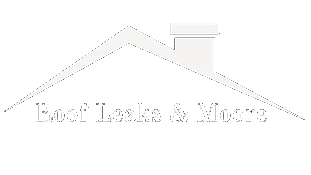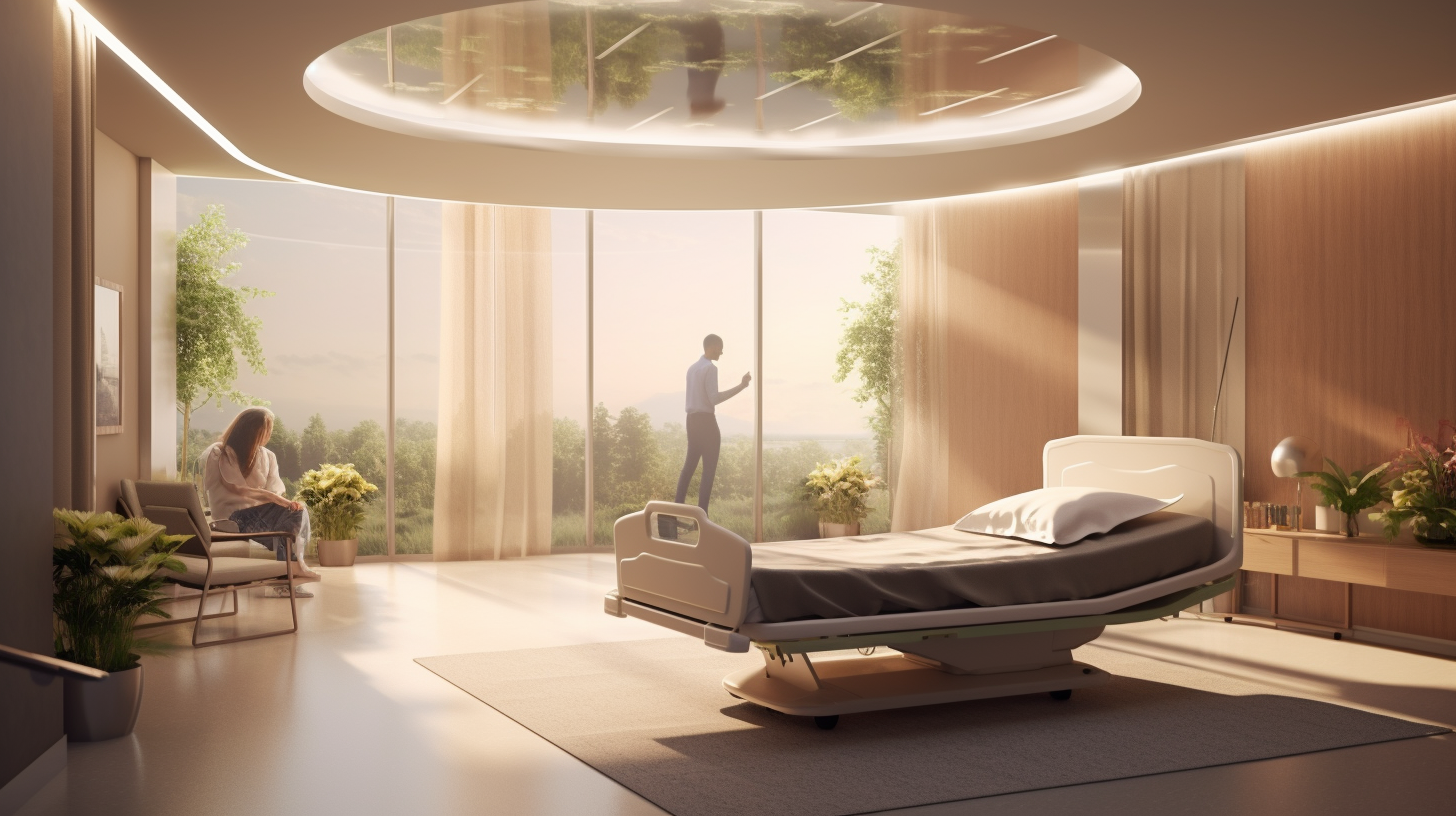When it comes to healthcare facilities, creating a serene environment is crucial for patients’ healing and recovery. Noise pollution can be a major barrier to achieving this goal, as it can increase stress levels, interfere with sleep, and even negatively impact medical outcomes.
For this reason, healthcare providers need to prioritize noise reduction in their facilities, particularly in the roof installations. The roof plays a critical role in noise reduction, as it is often the first line of defense against external noise sources such as traffic, aircraft, and construction.
However, installing a roof that effectively reduces noise requires careful planning, design, and construction. In this article, you will learn about the best practices for noise reduction in healthcare roof installations and the benefits of creating quiet spaces for healing.
The Importance of Serene Environments in Healthcare
You’ll appreciate being in a serene environment when you’re seeking healing in a healthcare facility. Designing interiors that promote calmness and relaxation is essential in creating a positive atmosphere for patients. Incorporating nature-based solutions such as indoor plants or natural light can help reduce stress and anxiety levels.
Studies have shown that exposure to nature can lower blood pressure, reduce the need for pain medication, and improve sleep quality. By bringing nature indoors, healthcare facilities can create a healing environment that promotes recovery.
The role of the roof in noise reduction is crucial in creating a serene environment for patients. A noisy environment can increase stress levels and interfere with the healing process. Installing a noise-reducing roof can help reduce the impact of external noises such as traffic or construction noise.
It can also help reduce the noise levels of mechanical equipment such as HVAC systems or generators. By ensuring that healthcare facilities have a quiet and peaceful environment, patients can focus on their recovery without distractions.
The Role of the Roof in Noise Reduction
The roof plays a crucial part in creating a peaceful and calming environment for patients. Proper roof materials and acoustical design are essential in reducing noise levels and creating an atmosphere that promotes healing.
When selecting roof materials, it is important to consider their noise-reducing properties. For instance, metal roofs tend to be noisier than other materials, such as asphalt shingles, which have a better sound absorption rate.
Acoustical design is also crucial in reducing noise levels. This includes the use of sound-absorbing materials, such as insulation, to reduce sound transmission through the roof. Additionally, the design of the roof itself can play a role in reducing noise levels. For example, a sloped roof can help reduce the amount of noise that enters a building compared to a flat roof.
Overall, the design and materials used in a healthcare roof installation should prioritize noise reduction to create a peaceful and healing environment for patients.
When it comes to noise reduction in healthcare roof installations, there are several best practices to follow. These include selecting roof materials with high sound absorption rates, incorporating acoustical design elements into the roof structure, and ensuring proper installation techniques are used.
Following these best practices can help create a serene environment that promotes healing and recovery for patients.
Best Practices for Noise Reduction in Healthcare Roof Installations
To effectively reduce noise in healthcare roof installations, you should implement soundproofing techniques. These include using sound-absorbing insulation materials and adding barriers to block airborne noise. Addressing HVAC noise is also crucial. You can do this by installing noise-reducing ductwork or using vibration isolation equipment.
Additionally, considering acoustic ceiling tiles that have high noise reduction coefficients can significantly reduce noise transmission between floors and rooms.
Implementing Soundproofing Techniques
Imagine feeling the soothing effects of nature during your hospital stay, all thanks to implementing soundproofing techniques that block out disruptive noises. One effective way to achieve this is through the use of sound barrier and insulation techniques. Installing a sound barrier between the roof and the ceiling can significantly reduce noise levels from external sources such as traffic, aircraft, or construction. Meanwhile, insulation techniques can help reduce noise levels from internal sources such as mechanical equipment or people walking on the roof.
To further enhance the healing environment, the use of a nature-inspired sound table can also be incorporated into the design. This table can mimic the sounds of nature such as gentle rain, rustling leaves, or bird songs, promoting relaxation and reducing stress levels. Additionally, incorporating natural elements such as green roofs or rooftop gardens can also provide a calming environment for patients and promote healing.
As you address the issue of HVAC noise in healthcare roof installations, consider the impact it can have on patients’ healing process. By implementing soundproofing techniques and creating a soothing environment, you can help reduce stress levels and promote a faster recovery time.
Addressing HVAC Noise
Don’t let loud HVAC systems disrupt patient recovery – address the noise in your hospital’s roof design.
HVAC noise reduction is a crucial aspect of creating a peaceful and healing environment for patients. To effectively reduce HVAC noise, consider implementing sound attenuation techniques such as:
- Installing noise-reducing ductwork: Ductwork made from materials that absorb sound waves can effectively reduce HVAC noise. Consider using materials such as fiberglass, foam, or acoustic lining to line the ductwork.
- Using vibration isolators: HVAC equipment can create vibrations that produce noise. Using vibration isolators such as neoprene pads or spring mounts can effectively reduce the transmission of vibrations and noise.
- Designing equipment rooms with sound attenuation in mind: When designing equipment rooms, consider sound attenuation techniques such as adding acoustic panels or soundproof doors. Proper sound attenuation can significantly reduce the amount of HVAC noise that patients and staff experience.
Addressing HVAC noise is an essential step in creating a peaceful healing environment for patients. However, it’s not the only step. Consider incorporating acoustic ceiling tiles into your hospital’s roof design to further reduce noise and create a tranquil space for healing.
Considering Acoustic Ceiling Tiles
Acoustic ceiling tiles create a serene environment for patients by absorbing excess sound waves in hospital rooms. These tiles are made of porous materials that trap sound and prevent it from bouncing off hard surfaces. Acoustic paneling is installed in a grid-like pattern on the ceiling, providing an aesthetically pleasing and effective solution for controlling noise levels.
The effectiveness of sound absorption is measured by a tile’s Noise Reduction Coefficient (NRC). The NRC ranges from 0 to 1, with 1 being the highest level of sound absorption. The table below shows the NRC rating of some common materials used in acoustic ceiling tiles.
| Material | NRC Rating |
|---|---|
| Fiberglass | 0.75-0.95 |
| Mineral Fiber | 0.60-0.90 |
| Wood | 0.50-0.80 |
| PVC | 0.10-0.50 |
| Metal | 0.05-0.20 |
By using acoustic ceiling tiles with high NRC ratings, healthcare facilities can create a peaceful and healing environment for patients. This can have numerous benefits, which will be discussed in the subsequent section.
Benefits of Creating Quiet Spaces for Healing
Creating quiet spaces for healing can have numerous benefits, such as reducing stress and anxiety levels in patients. Studies have shown that noise levels above 35 decibels can increase the risk of readmission by 10%.
Here are four benefits of creating quiet spaces for healing:
- Improved Patient Well-being: Patients who are in a quiet environment tend to exhibit lower blood pressure, heart rate, and stress levels. They also have a better chance of sleeping well, which is critical for the healing process.
- Enhanced Staff Performance: A quiet environment can help medical staff concentrate better, leading to improved job performance. This can lead to better patient care, fewer errors, and better outcomes.
- Reduced Noise Pollution: Creating a quiet healing environment can help reduce noise pollution and create a peaceful atmosphere, which can be beneficial for patients, visitors, and staff.
- Better Recovery Outcomes: Patients who are in a quiet environment tend to recover faster than those who are in a noisy environment. This is because a quiet environment promotes relaxation, which is critical for the healing process.
Creating quiet spaces for healing can have a significant impact on patient well-being and staff performance. It can also help reduce noise pollution and improve recovery outcomes. Therefore, it’s essential to consider noise reduction in healthcare roof installations to create a peaceful environment that promotes healing.



